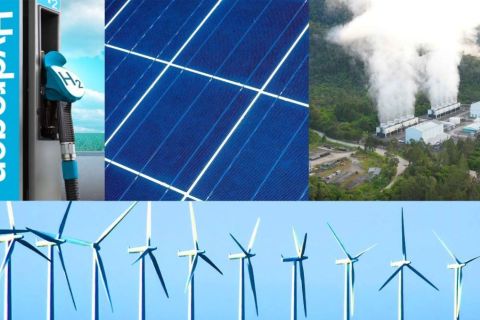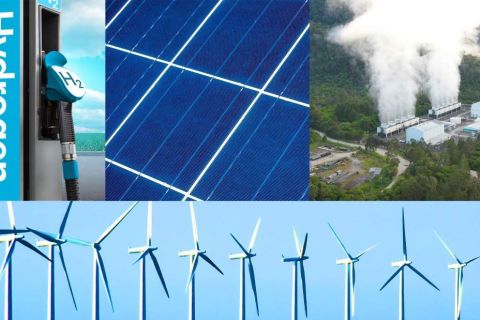The old adage states that "more is better," and as cliché as that might be, for pipeline owners and operators in need of inspection data, the adage is still true. Another adage: "Time is money," and, again, that also rings true, particularly in light of the ever-increasing need to inspect hundreds and hundreds of miles of pipeline assets for a multiplicity of defects.
Taken together, one might say that "more data in less time" is the ideal. Thanks to recent advances in inline inspection (ILI) technology, gathering multiple datasets in a single inspection run—more data in less time—is now very feasible. In fact, a new seam-assessment technology developed by T.D. Williamson Inc. (TDW) makes it easier than ever to simultaneously gather multiple datasets and efficiently and accurately analyze data.
Of course, in order to gather multiple datasets, an operator must have individual technologies capable of generating useful information. One such technology that has proven itself time and again is magnetic flux leakage (MFL).
"MFL is the tried-and-true ILI technology that is used for corrosion inspection," says Chuck Harris, general manager for TDW. "This technology uses magnets to saturate the pipeline. There are sensors oriented within the magnetic field which detect leakage. When this leakage occurs, the sensors capture data that is later processed, analyzed and reported to the pipeline operator for integrity management."
As useful as it is, however, MFL is not without its limitations. MFL is induced into the pipeline longitudinally, so any abnormalities that run in parallel with such technology will go undetected. For example, seam-weld features, or long seams, are in the longitudinal orientation. As a result, something more is needed to get a completely accurate picture of the pipe's defects.
In the past, many seam assessments have relied on use of what are known as transverse field inspection (TFI) tools, which are much like MFL except that the magnetic field is oriented in the circumferential (transverse) direction. TFI utilizes two offset magnetizers to achieve 100% coverage of the pipe wall. Such an orientation would naturally bisect long seams. An example of this magnet configuration is shown in Figure 1. Yet, TFI is not without its drawbacks.
"The difficulty with TFI is that, while it will detect crack-line features in the long seams, other features that are volumetric or have width will go undetected or be mischaracterized," says Harris. "A pipeline operator could conceivably get a TFI assessment report and go into the field to verify that, only to find that the features are mill-related or find some other aspect that is not associated with a crack-like feature."

Magnetism induced circumferentially between poles creates inspection gaps where magnets are located. An offset magnetizer is required to achieve 100% coverage.
A fuller picture
To resolve this concern and be able to inspect a long seam, TDW developed a new approach. Rather than relying on either longitudinal or circumferential magnetism, this approach is based on induction of magnetism using a spiral or oblique field, creating what is called a spiral magnetic-flux leakage (SMFL) tool. Figure 2 shows an example of what this spiral (oblique) field looks like inside a pipe.
The patent-pending SMFL design makes it possible to achieve complete coverage of the pipe wall using only one magnetizer, as opposed to TFI tools, which require two. According to Harris, reducing the need from two magnetizers to one is important because it keeps tool length to a minimum, making it possible to combine the SMFL tool with traditional high-resolution MFL. The combination of SMFL and MFL allows improved classification of seam-weld anomalies, plus detection and quantification of other longitudinally oriented defects. Traditional metal-loss assessment can also be accomplished, all with the same tool.
"From the original concept, our objective was to create an alternate design for seam-weld inspection through use of a single magnetizer, for the purpose of combining it with additional technologies to achieve enhanced inspection results over circumferential MFL," Harris says.
The technologies that can be added to the SMFL tool are numerous and varied. For example, XYZ mapping technology can be added to locate the precise centerline trajectory of a pipeline in latitude, longitude and elevation. High resolution deformation (DEF) technology can be added to generate bore measurement and strain calculations. Additionally, inside diameter/outside diameter (ID/OD) sensors can be incorporated on deformation arms for verification of internal/external metal-loss classification. These same ID/OD sensors can also provide details on internal surface conditions, such as discrimination of debris fields from dents or other bore reductions. Residual or low-field sensors can be utilized to detect hard spots, the "halo-effect" caused by dent re-rounding, and other flaws.
"A multiple dataset tool can feature all of these technologies along with SMFL and MFL," says Harris. "The use of multiple magnetic fields and other technologies makes detection easier, and, once something is detected, it makes identification more accurate during the post-run analysis. It's like having multiple photographers take photos of the same object from different angles all at the same time. You put those photos side-by-side, and a fairly clear image of the object—or in the case of a pipeline, an anomaly—develops."
For example, use of the deformation technology can allow you to identify a dent at a specific o'clock position on the pipeline. This dent can then be confirmed by the MFL technology and an ID/OD overlay. Also, incorporating residual sensors could reveal additional strain induced by the dent but outside the specific dent area.
However, what might still be unclear at this point comes into focus once SMFL data is reviewed. The dent is reflected, but closer analysis also reveals a gauss change, evidence of metal loss at the dent site. Due to its geometry, this metal loss would have gone undetected had only the MFL technology been used.
Although pre-1970 electric resistance welded (ERW) pipelines can create major seam-weld concerns, any feature running longitudinally will be undetected by MFL technology alone.
"Dents with longitudinal gouging or metal loss are considered to be conditions requiring immediate repair, according to Pipeline Hazardous Material Safety Association's guidelines," explains Harris. "Running this platform with these combined technologies in any pipeline that has previously been inspected without assessing the longitudinal axis creates the opportunity to identify defects more clearly."

A boundary-element model of spiral or oblique field design allows complete coverage of the pipe wall with one magnetizer.
One and done
This ability to fully characterize an anomaly—whether it be metal loss, axial gouging, hard spots, seam defects, narrow axial corrosion or other longitudinal anomalies—in just one tool run is what ultimately makes the multiple dataset technology a boon for pipeline owners and operators.
In the past, multiple inspection technologies would have required multiple tool runs due to the sheer length and power requirements of the tools. Such is no longer the case. It helps that SMFL requires just one magnetizer, but minimizing tool length is primarily a factor of savvy electronics and a lack of wasted space.
In the case of the SMFL multiple dataset tool, a single central processing unit (CPU) controls the whole system. Multiple advantages are realized, including a more than three times reduction in the CPU volume, as well as a more than four times power savings and a more than four times increase in run time. Five times as much data can be stored versus previous technologies, and all datasets can be synchronized. There is also a dramatic increase in the number of sensor inputs, meaning more data is collected than ever before. A typical 8-inch multiple dataset tool is 93 inches long and includes odometers, SMFL, deformation, ID/OD, MFL and residual sensors. All total, the tool includes 396 sensors.
SMFL technology has already proven itself in the field during more than 1,000 miles of pipeline inspection, says Harris. The bottom line for pipeline owners and operators: more data means fewer digs as compared to stand-alone circumferential MFL. Analyzing SMFL and MFL data together helps verify and explain findings, effectively eliminating any guesswork when it comes to identifying seam-weld anomalies, even as it offers improved identification of other longitudinally oriented defects.
"When you boil it down, this technology eliminates unnecessary digs for pipeline operators and excavating to check features that are not crack-like in nature," Harris says. "And that saves everyone time and money."

Numerous technologies and multiple datasets are delivered via a single pig run.
Recommended Reading
CERAWeek: NextEra CEO: Growing Power Demand Opportunity for Renewables
2024-03-19 - Natural gas still has a role to play, according to NextEra Energy CEO John Ketchum.
EnCap Launches Bildmore to Invest in Hard-to-finance Clean Energy
2024-03-11 - In an effort to support hard-to-finance clean energy projects, EnCap Energy Transition Fund is launching Bildmore, a platform expected to invest in up to 15 third-party battery storage, solar and other energy transition projects per year.
Hirs: Aspirations Meet Reality—The Undisclosed High Cost of the Energy Transition
2024-04-16 - The nation is trying to keep up with the growth of renewable power resources, but before transmission lines can be built, the power plants must first have interconnects with the grid.
Energy Transition in Motion (Week of Feb. 2, 2024)
2024-02-02 - Here is a look at some of this week’s renewable energy news, including a utility’s plans to add 3.6 gigawatts of new solar and wind facilities by 2030.
Energy Transition in Motion (Week of Feb. 16, 2024)
2024-02-16 - Here is a look at some of this week’s renewable energy news, including the outlook for solar and battery storage in the U.S.





